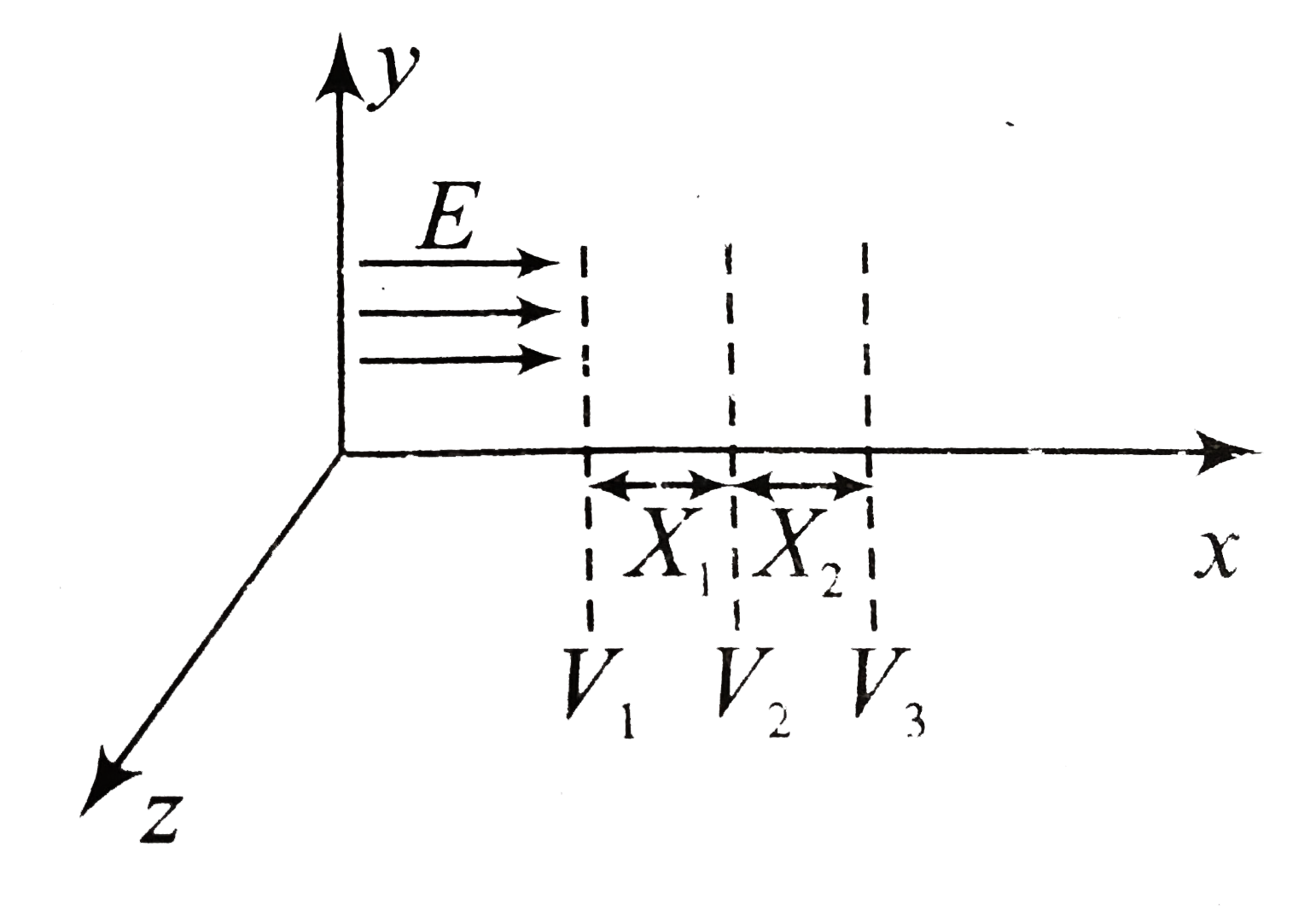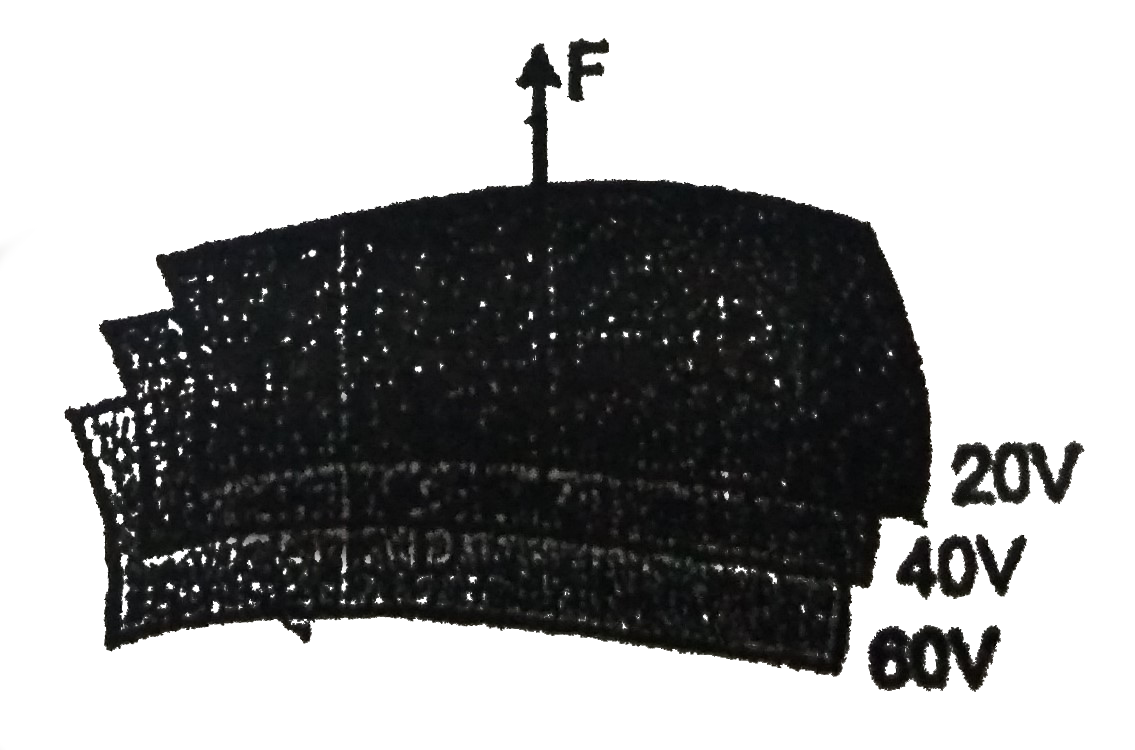In an electric field shown in figure, three equipotential figure, three equipotential surfaces are shown. If function are shown. If function of electric field is , and given that , then we have

data insufficient
The correct Answer is:B
b. As increasing along axis, same potential drop will occur for lesser values of distance. Hence .
Topper's Solved these Questions
- MISCELLANEOUS VOLUME 3BOOK - CENGAGE PHYSICS ENGLISHCHAPTER - MISCELLANEOUS VOLUME 3EXERCISE - Assertion and Reason Type
8 Videos
- MISCELLANEOUS VOLUME 3BOOK - CENGAGE PHYSICS ENGLISHCHAPTER - MISCELLANEOUS VOLUME 3EXERCISE - Comprehension Type
94 Videos
- MAGNETIC FIELD AND MAGNETIC FORCESBOOK - CENGAGE PHYSICS ENGLISHCHAPTER - MAGNETIC FIELD AND MAGNETIC FORCESEXERCISE - Multiple Correct Answer type
2 Videos
- MISCELLANEOUS VOLUME 5BOOK - CENGAGE PHYSICS ENGLISHCHAPTER - MISCELLANEOUS VOLUME 5EXERCISE - Integer
12 Videos
Similar Questions
Equipotential surfaces are shown in figure. Then the electric field strength will be

View SolutionA family of equipotential surface are shown. The direction of the electric field at point A is along-

View SolutionIf the given figure shows equipotential surfaces, then the magnitude of electric field is

View Solution(Figure 3.27) shows equipotential surfaces. What is the direction of electric field →E at P and R?
 .
.
View SolutionA few spherical equipotential surfaces are shown in the figure. The electric field at any point, at a distance x from the centre, is

View SolutionSome equipotential surfaces are shown in figure(29.E3) What can you say about the magnitude and the direction of the electric field?

View SolutionIn the hexaploid wheat, the haploid (n) and basic (x) numbers of chromosomes are
View SolutionA Gausisan surface in the figure is shown by dotted line.
The electric field on the surface will be

View SolutionIn uniform electric field, E=10NC−1 as shown in figure, find
(i) VA−VB
(ii) VB−VC.
View SolutionA uniform electric field of 400V/m is directed at 45∘ to the positive X-axis, in the X−Y plane as shown in figure

View Solution
